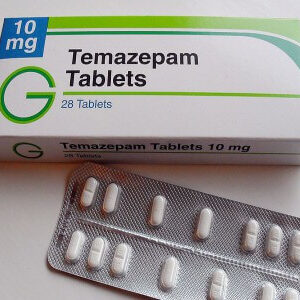Description
Flunitrazepam 2mg is a low-dose benzodiazepine with major clinical and forensic implications (drug-facilitated sexual assault, driving under the influence of the drug, workplace drug testing, and substance abuse). The detection and quantitation of Flunitrazepam 2mg and/or its metabolites in biological samples are complicated by the low concentrations in these matrices, the stability issues of the compound and sometimes the long time window between exposure and sample collection. The analysis can be performed in conventional biological fluids, but it is more and more frequently reported from alternative samples (oral fluid, hair) too. A great variety of sample preparation, identification, and quantitation techniques are described in the literature. Method selection is dependent on the aim of the analysis, the required sensitivity and specificity, the available sample type and amount, and last but not least the accessible laboratory infrastructure.
Flunitrazepam 2mg, marketed as Rohypnol, is a potent benzodiazepine that is marketed legally in South America, although its sale in the United States and Canada has been restricted. It is 10 times as potent as diazepam, and shares amnestic properties with other benzodiazepines. Its potency and ability to produce amnesia has led to its misuse in facilitating sexual assault, giving it the reputation of being a “date rape drug
At low doses, Flunitrazepam 2mg is an anxiolytic, muscle relaxant, and sedative-hypnotic. At higher doses, behavioral inhibition, amnesia, and unconsciousness occur, as may respiratory depression. Its effects are potentiated by the concurrent use of alcohol. Disinhibition may lead to motor vehicle accidents, other trauma, violent behavior, or sexual assault, and Flunitrazepam 2mg has been implicated in the occurrence of violent crime. Fatal intoxication has been reported with the concurrent use of alcohol; rarely, death associated solely with the ingestion of flunitrazepam may occur.
Management of Flunitrazepam 2mg intoxication is largely supportive. Neurologic impairment, amnesia, and respiratory depression, which may begin as early as 30 minutes after ingestion, generally last for 8 to 12 hours and are dose related. Support of the patient with a jeopardized airway is indicated. Gastric lavage and activated charcoal are likely to be of little benefit, unless the patient presents shortly after the ingestion. The benzodiazepine antagonist flumazenil may reverse respiratory depression, but should be used with caution as it may precipitate benzodiazepine withdrawal, manifested as tremor, irritability, and seizures. Supportive care with airway protection and mechanical ventilation until the patient is fully awake is the safest approach.




Reviews
There are no reviews yet.